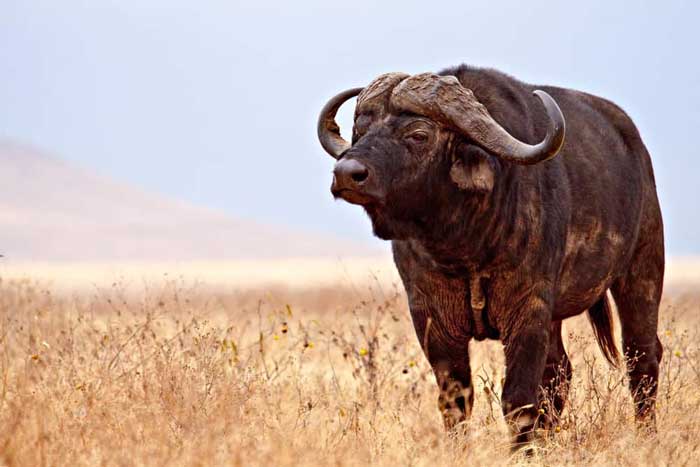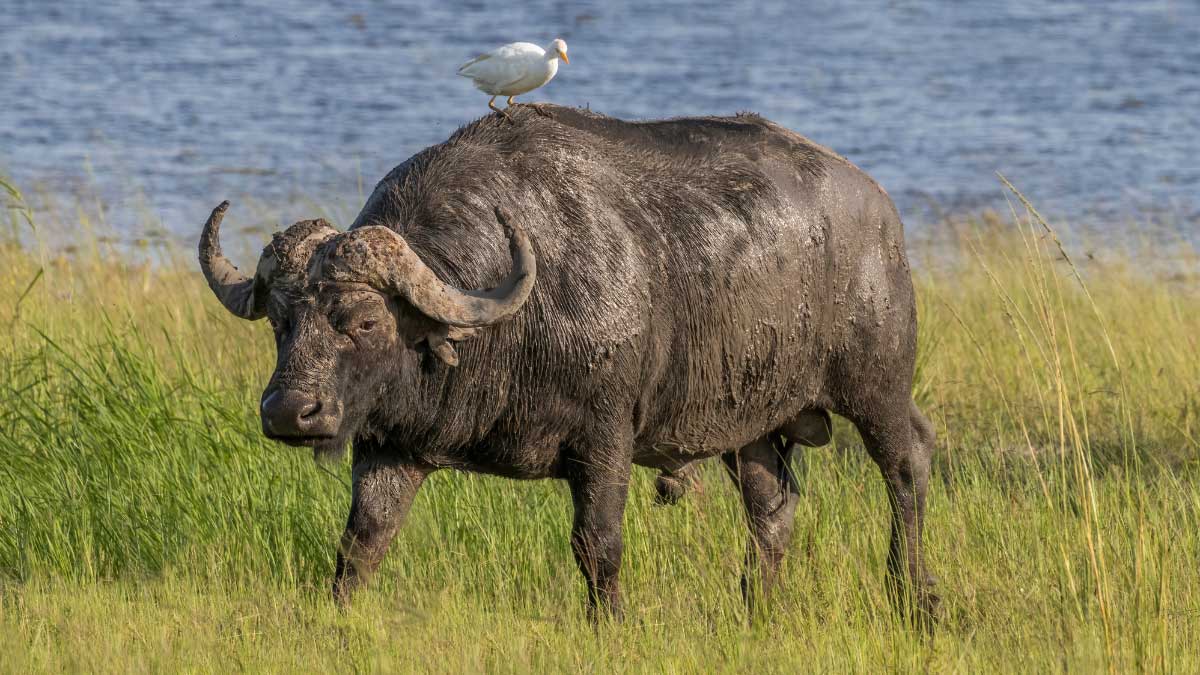How Much Does Buffalo Weigh: Insights on Size, Diet, and More
When you think of a buffalo, its massive size likely comes to mind. These magnificent creatures are truly one of nature’s giants. On average, buffalo weigh between 701 and 2,205 pounds, but some have tipped the scales at over 3,800 pounds! Male buffalo, known for their larger size, can weigh significantly more than females.
Buffalo aren’t just about bulk; they’re also surprisingly athletic. Despite their hefty weight, they can sprint at speeds up to 35 miles per hour and leap over six feet in the air. Their impressive size and agility make them fascinating subjects for wildlife enthusiasts and researchers alike.
Understanding buffalo weight is crucial not only for appreciating their physical prowess but also for conservation efforts. These factors play a vital role in their habitat needs and overall health. Whether you’re a wildlife enthusiast or a curious reader, exploring the weight of buffalo offers insights into their majestic presence in the wild.
Key Takeaways
- Buffalo are large mammals, with weights ranging from 701 to over 3,800 pounds, influenced by factors such as sex, breed, age, diet, and environment.
- Male buffalo generally weigh more than females, with specific breeds showcasing distinct weight ranges.
- Buffalo exhibit remarkable athleticism, capable of reaching speeds up to 35 mph and leaping over six feet, despite their massive size.
- Variations in buffalo weight are closely linked to their habitat and geography, affecting their diet and physical development.
- Buffalo conservation faces challenges like diseases, habitat loss, and human-wildlife conflict, with solutions involving protected areas, veterinary care, and community involvement.
Understanding Buffalo Weight
Buffalo weight varies significantly based on several factors, making it a fascinating subject of study and observation. Whether you’re a student, wildlife enthusiast, or professional, understanding these factors provides insight into these majestic creatures.

Factors Influencing Weight
- Sex: Male buffalo tend to weigh more than females. For instance, male Murrah buffalos can reach up to 782.16 kg, whereas Anatolian males have an average carcass weight of 325.4 kg compared to females at 288.2 kg.
- Breed: Different buffalo breeds showcase varying weight ranges. Mediterranean buffalos raised on tropical grass show weights between 517 kg for the low body weight group and 568 kg for the high body weight group.
- Age: As buffalo mature, their weight naturally increases, explaining differences in weights among varying age groups.
- Diet and Environment: The availability of food and environmental conditions plays a crucial role, influencing their overall health and weight gain strategies.
Average Weight of Male and Female Buffalo
A comparison between male and female buffaloes highlights significant differences:
| Metric | Male Buffalo | Female Buffalo |
|---|---|---|
| Anatolian Water Buffalo | 325.4 kg | 288.2 kg |
| Mediterranean (LBW) | 517 kg | N/A |
| Mediterranean (HBW) | 568 kg | N/A |
| Murrah Breed | 782.16 kg | N/A |
These statistics illustrate the substantial role factors like sex and breed play in determining buffalo weight. Understanding these metrics enables better conservation and management practices.
Physical Characteristics
Buffalo exhibit remarkable physical traits that set them apart within the animal kingdom. Their size, weight, and horn structure are significant identifiers across different breeds.
Size and Height
Buffalo size and height vary widely, influenced by factors like age and breed. Mediterranean breed buffalo are documented from birth to 720 days, indicating the dynamic growth over their lifespan. Mature male Murrah buffalo average around 782.16 kg (1,724 pounds), showcasing the potential for significant size. Height also fluctuates among breeds, driving curiosity about developmental patterns.
Horn Structure
Buffalo horns serve as distinct physical markers, and vary based on breed and species. These structures can be both majestic and utilitarian. Murrah breed buffalo typically possess shorter, curled horns, while more extensive and broader shapes are seen in other types. Horn growth is linked to genetics and dietary factors. Knowing horn characteristics enhances your understanding of these formidable creatures’ defense and behavior adaptations.
Habitat and Geography
Buffalo weight is closely tied to the regions they inhabit. Various geographical and environmental conditions influence their physical characteristics.
Natural Habitats
Buffaloes thrive in diverse habitats, ranging from grasslands and savannas to marshes and floodplains. These environments provide abundant vegetation, which supports their diet and, consequently, their weight. For instance, African savannas offer the space and foliage essential for buffalo grazing. Similarly, the marshes in South Asia provide ideal conditions for water buffalo, ensuring a stable food supply conducive to healthy weight maintenance.
Influences on Weight Due to Geography
Geographical conditions directly impact buffalo weight. Regions with rich vegetation, like the plains of India and the wetlands of Southeast Asia, provide ample nutrition, contributing to heavier buffalo populations. In contrast, arid areas may lead to lighter weights due to limited food resources. Additionally, environmental stressors like extreme weather conditions can affect buffalo growth and weight, making geographical factors crucial for understanding their overall physical development.
Behavior and Ecology
Buffalo behavior and ecological habits are integral to understanding their weight and overall well-being. Their social structures and dietary habits significantly influence their physical characteristics and adaptation in various environments.
Diet and Its Impact on Weight
Buffaloes primarily consume grasses, sedges, and herbs, with diet quality affecting weight. In environments rich in nutritious vegetation, like African savannas, buffaloes tend to reach optimal weights. Poorer habitats yield less body mass due to limited resources. For instance, Anatolian water buffaloes, often raised under intensive fattening strategies, show significant weight variations when their diet changes. Nutrition determines growth rates and influences body composition, crucial for their survival and reproductive success.
Social Structure and Lifestyle
Buffalo herds typically consist of large family units led by a dominant matriarch, which affects social interactions and weight dynamics. In herds, competition for food can determine access to resources, thereby influencing individual weight. Social structures foster cooperation during migratory movements, ensuring group survival in changing conditions. Lifestyle behaviors such as migration and environmental adaptation also contribute to maintaining stable body weight. For example, Murrah buffaloes, used in agriculture, adapt to work-intensive lifestyles, impacting their weight and physical development.
Understanding these components of buffalo behavior and ecology assists in effectively managing their populations and conserving their habitats.
Conservation and Protection
Buffalo species face various conservation challenges, leading to declining populations. Understanding these threats and ongoing conservation efforts is crucial for addressing these issues effectively.
Threats to Buffalo Populations
- Diseases: African buffalo are particularly vulnerable to diseases like rinderpest and foot-and-mouth disease. The 1890s rinderpest epidemic drastically reduced their numbers.
- Habitat Loss: Expanding human activities contribute to habitat fragmentation, putting buffalo at risk. Urbanization, agriculture, and deforestation reduce available grazing areas.
- Hunting: Illegal hunting for meat and horns remains a significant threat. It’s driven by cultural practices and economic incentives.
- Droughts: These affect the availability of food and water, leading to malnutrition and decreased populations. Climate change exacerbates this issue.
- Human-Wildlife Conflict: As humans encroach on buffalo habitats, conflicts arise, often resulting in buffalo casualties. This conflict increases as human settlements expand.
- Protected Areas: Establishing national parks and reserves helps protect buffalo from poaching and preserves their natural habitats. These areas provide safe environments for herds to thrive.
- Disease Management: Veterinary interventions, such as vaccination programs, combat disease outbreaks. Research into disease-resistant buffalo breeds also supports long-term health.
- Community Involvement: Engaging local communities in conservation initiatives creates a shared responsibility for buffalo protection. Educating and employing locals as wildlife guardians promotes sustainable practices.
- Legislation: Enforcing strict wildlife protection laws reduces poaching and trade of buffalo products. Governments actively collaborate with international organizations to ensure compliance.
- Research and Monitoring: Ongoing studies track buffalo populations, offering critical insights into their behavior and ecology. Data-driven decisions improve conservation strategies.
Efforts to understand and combat these threats through research and community involvement illustrate the commitment necessary for buffalo conservation.
Conclusion
Exploring the weight and characteristics of buffalo offers valuable insights into their ecological roles and conservation needs. By understanding the factors that influence their weight and behavior, you can appreciate the complexity of these majestic creatures. This knowledge is crucial for implementing effective conservation strategies, ensuring that buffalo thrive in their natural habitats. Whether you’re a wildlife enthusiast or a conservationist, grasping the intricacies of buffalo weight and ecology can enhance your appreciation and support for these remarkable animals.







